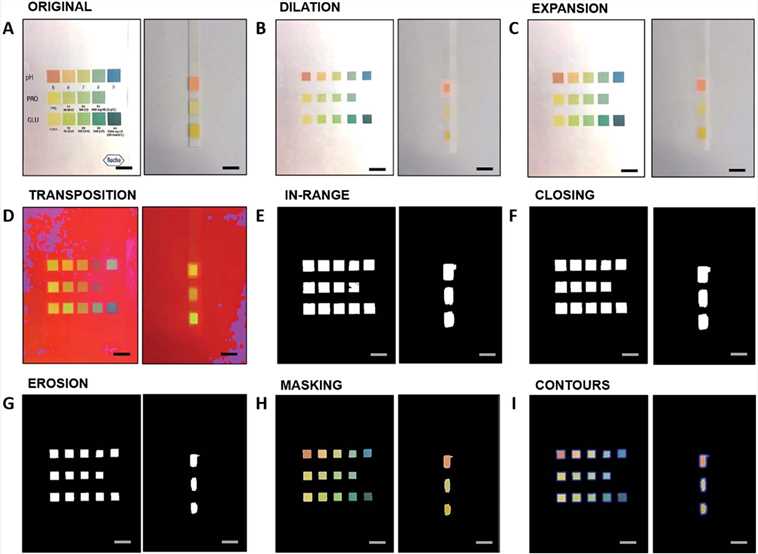Colorimetric detection-based smartphones (SPs)-in vitro diagnosis (IVD) mainly use an optically opaque attachment, consisting of light-emitting diodes (LEDs) and diffusers for uniform illumination, apertures for the desired imaging field of view (FOV), and a sample chamber. SP-based point-of-care (POC) colorimetric detection is used for various analyte with high sensitivity and specificity.
 Fig.1 Portable health tracking: smartphone-based colorimetric detection system.1
Fig.1 Portable health tracking: smartphone-based colorimetric detection system.1
Colorimetric Detection in Pseudomonas aeruginosa (P. aeruginosa)
P. aeruginosa was identified as the second infectious pathogen isolated from patients with hospital-associated pneumonia (HAP). Therefore, rapid and proper diagnosis is essential to enable timely treatment to reduce the risk of mortality. Conventional diagnostic methods are based on culturing and require at least 24 hours to report the results, reducing the chance of appropriate and successful treatment.
Scientists found that bacterial enzymes, such as proteases, are ideally suited as biomarkers for quick and sensitive identification of micro-organisms in clinical samples. In a study, P. aeruginosa specific peptide substrate was coupled to magnetic nanoparticles (MNPs) to be utilized in a rapid and specific colorimetric biosensor. This study illustrates this biosensing configuration is amenable for qualitative and semi-quantitative detection of P. aeruginosa proteases. The limit of detection was as low as 102 colony-forming units/milliliter (CFU/mL) within one min. The assay was simple, rapid, sensitive, and specific and does not require any labeling or amplification steps. It does not require sample pretreatment or preconcentration and so can be applied for onsite use by clinicians.
Colorimetric Detection in Escherichia coli (E. coli)
Accurate and early detection of bacterial pathogens can lead to immediate and effective actions to prevent or curtail foodborne and waterborne pathogen outbreaks. However, many of the current gold-standard methods to identify pathogenic bacteria require at least 18 hours from sampling to results. A novel enzyme-induced metallization colorimetric assay was developed by scientists to monitor and measure beta-galactosidase (β-gal) activity. Then, it was further employed for colorimetric bacteriophage (phage)-enabled detection of Escherichia coli (E. coli).
In the presence of β-galactosidase (β-gal), the substrate p-aminophenyl β-D-galactopyranoside (PAPG) is hydrolyzed to produce p-aminophenol (PAP). Reduction of silver ions by PAP generates a silver shell on the surface of AuNRs, resulting in the blue shift of the longitudinal localized surface plasmon resonance (LSPR) peak and multicolor changes of the detection solution from light green to orange-red. Due to the simplicity and short incubation time of this enzyme-induced metallization colorimetric method, the assay is well suited for the detection of bacteria in low-resource settings.
Creative Biolabs offers comprehensive services across every stage of IVD development aided by our various diagnostic platforms. If you want to know more information, please directly contact us.
References
- Balbach, Samira, et al. "Smartphone-based colorimetric detection system for portable health tracking." Analytical Methods 13.38 (2021): 4361-4369.
For Research Use Only.

